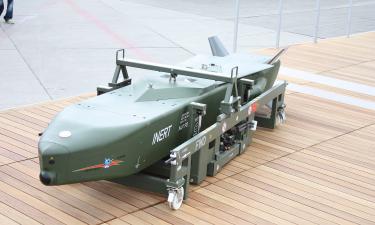Neurosurgeons to operate brain cancer without using scalpels
The device enables to aim radiation beams at a malignancy inside the brain
A new set of equipment will be commissioned soon at the Burdenko Neurosurgery Research Institute in Moscow. It comprises a linear accelerator and a gamma knife. Thanks to new equipment, patients will be able to leave hospital premises right after a medical procedure is over. In the past, patients had to spend weeks in hospital recovering after a complex skull trepanation. 
First the doctors need to adjust a coordinate frame to a stereotaxic device on a patient's head. The device enables to aim radiation beams at a malignancy inside the brain. The linear accelerator will start moving around the patient's head once the frame is adjusted. The accelerator has a many-petaled collimator for “mapping out” the tissues to produce images of a tumor. The collimator will then direct a flux of photons to destroy the cancer cells. The procedure will be repeated at different planes until the tumor is completely irradiated. The whole procedure takes a couple of hours to complete, a patient feels no pain whatsoever while undergoing it.
“In the past we had to perform a long and complex operation to be followed by days of recovery,” says Doctor of Medical Sciences Andrei Golanov, head of radiology and radiosurgery department of the institute. “The new method will enable us to treat patients diagnosed with some kinds of brain cancer and in-depth metastases, blood vessels pathologies, and some other cases which in fact can not be handled in any other way,” says he.
The installation of the gamma knife is under way in the other room. A high-dose and much more accurately directed radiation of cobalt-60 is used in the device. Unlike the linear accelerator, it has the fixed sources of irradiation. A patient is positioned in a special sliding bed that moves him a few parts of the millimeter. Apart from the coordinate frame around his head, the patient also wears a spherical collimator with 201 orifices in it. The gamma rays will focus on the tumor by passing through those orifices just like through a prism.
There was no such equipment available in Russia before. The equipment and its software cost millions of dollars. No government funding was involved in the project. The institute leased the equipment from foreign manufacturers. The leasing was not the only problem facing the researchers. They had to familiarize with the state-of-the-art equipment involving more than 50 computers. A team of mathematicians and medical physicists was formed to conduct the start-and-tune-up operations. Other personnel are tasked with processing a patient's data with regard to MRI and other diagnostic procedures so that targets may be assigned and a required dose of radiation be determined.
“Our estimate shows that about 25,000 persons in Russia require similar treatment, and we do hope to help many people by using this new equipment,” says Andrei Golanov.
Tatyana Bateneva
Subscribe to Pravda.Ru Telegram channel, Facebook, RSS!





